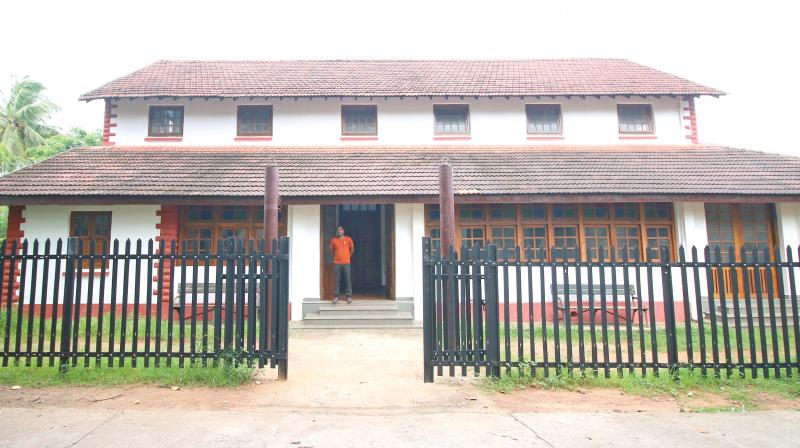Kozhikode: When colonial legacy is left to rot

Kozhikode: A cultural and heritage icon of imperialism, the more than a century-old Railway Institute building in the city, is getting a facelift but at a snail’s pace.
Envisaged as a museum with leisure and learning hub, it has a library and spaces for football, volleyball, snooker, billiards, badminton, caroms and yoga.
The library has more than 4,000 books, including old editions.
It was former Union minister for railways Pawan Kumar Bansal who directed a total renovation of the 1888-built institute at the time of the golden jubilee celebrations of the railway station in 2013. But for various reasons, the works got delayed.
An endearing abode of art and culture, it had hosted legends like actors Santha Devi and Nellicode Bhaskaran, Olympian T. Abdul Rahman and singer Abdul Khader.
“For the last six months, the works are on hold,” said M. Satheesh, its librarian. “The electricity works are yet to be completed.”
“Now we have to fence the entire area covering the ground with tie bars with iron rods from rail waste. A gate ideal for the colonial-era building needs to be brought from Shornur."
Former regional director of the Archaeological Survey of India K.K. Muhammed said the slow progress of works was saddening. “It should not be regarded as a burden; rather, it should be a hub for cultural programs and industrial exhibitions,” he said.
“Devastated wagons can be painted and reused there as a cafeteria, as it was planned years ago.”
The authorities planned it as a heritage tourist attraction, where they can rest for a while and roam around SM street, Mananchira and beach.
“We submitted a plan comprising a railway hospital, bungalow for drivers and other rail staff and a museum of miniature rail engines, bogies and signals, but in vain,” said Dr Shenoy Jesinth, assistant professor of history, Malabar Christian College.
Its floor tuned to the dancing rhythms during the British era and of Anglo Indians had later given way for charkhas weaving khadi. Now it is a venue for ‘sent off’ parties for the railway staff.
Its window panes in vivid colours of yellow and red were imported from Belgium.

